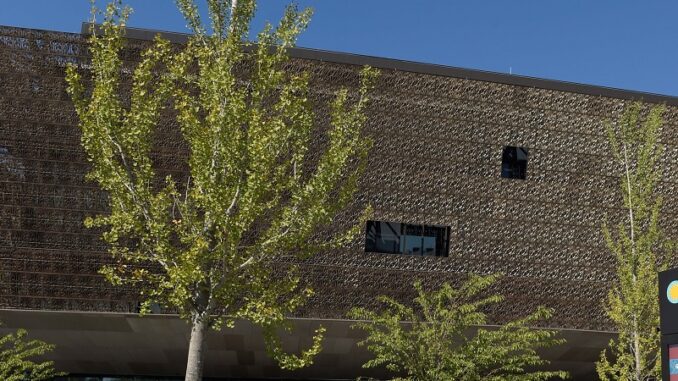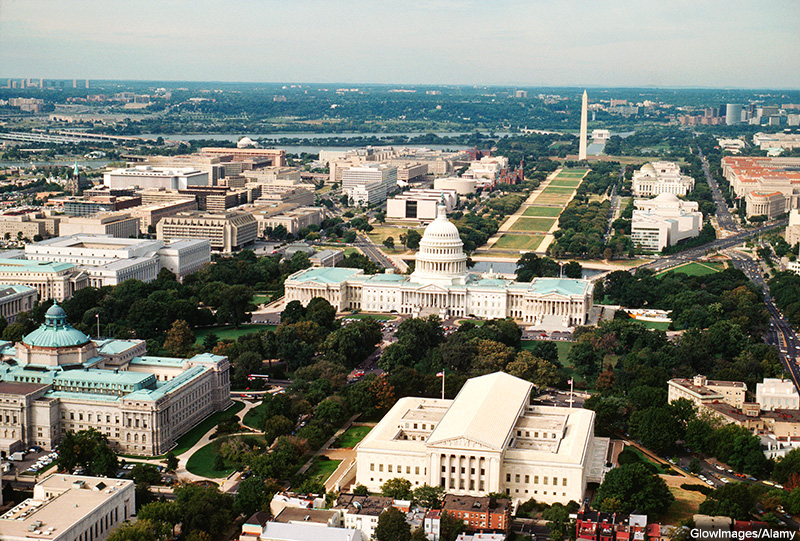
UPDATE!
Watch this video showing President Obama’s speech at the opening of the National Museum of African-American History and Culture.
*** Original post ***
This coming September 24, a new portion of the Smithsonian Institution will open on the National Mall. Named the National Museum of African-American History and Culture, this new wing of the Smithsonian Institution collection of museums focuses on the history of African Americans and the culture that they have brought to the United States.
Location and Significance
One of the most notable things about the National Museum of African-American History and Culture is the building’s design and the building’s location. It sits on the last available spot on the National Mall–the avenue of museums and memorials in the historic heart of Washington D.C. that includes the Lincoln Memorial, the Washington Monument, the World War II memorial, and some of the most famous branches of the Smithsonian Institutes museum system.

The location of this building, in the heart of some of the nations’ most cherished memorials and historic venues– a place visited by millions of tourists from around the world each year–raises the profile of the museum and ensures that the story told within the museum gets maximum impact and influence in the nations’ cultural conversation.
In addition, the design of the building makes it memorable and helps set it apart. The exterior shows three levels, each flaring outward at an angle from the one below. It gives the building a kind of “flipped and stacked pyramid” shape. The exterior walls of the musuem are also covered in a bronze skin. This makes the building stand alone and stand out amidst the many other white, limestone musuems and monuments that are also located on the Mall.
A Long Effort Completed
The idea of a national museum celebrating and explaining the complicated role of African Americans in the United States has been a long time in the making. The first proposals for this idea were made as far back as 1915 by African American veterans of the Civil War. Missouri member of Congress, Representative Leonidas Dyer drafted legislation in 1919, calling for the funding and building of a monument specific to the African American soldiers and sailors who fought in American Wars–to be located on the National Mall. But no agreement was reached on how to pay for the memorial.
The ideas was brought up once more during the Great Depression, but the financial difficulties in the nation again made funding the effort a hard sell. It was not until 1986 that Congress officially passed a joint resolution agreed upon by the House of Representatives and the Senate. This resolution allow for the collection of private funds for the collection and creation of a museum dedicated to African-American history and culture. In 2003, Congress passed a new act which put this new museum within the supervision of the Smithsonian Institution.
In recent years, $240 million dollars has been raised in donations, given by ordinary citizens and by extraordinarily famous people such as Oprah Winfrey, Samuel L. Jackson, LeBron James, and George Lucas. The federal government also contributed another $270 million.
Visitors will begin their museum explorations underground, focusing first on the darkness of the slavery experience. As they travel through time, examining the artifacts and learning more about the African American culture, they journey upward through the museum into the light of the builiding’s many windows reflecting modern Washington D.C.
The Grand Opening celebration is set for this coming Saturday.
Related Links:
- Learn more details about the thinking behind the museum’s design by following this Web link.
- Visit the main Web site of the National Museum of African-American History and Culture, to see what sort of exhibits and artifacts are housed in the museum collection
- Explore the overall organization and different museums within the Smithsonian Institute.
- In other museum-related news, the Museum of Modern Art in New York City recently announced it was going to place thousands of its exhibition images online.
